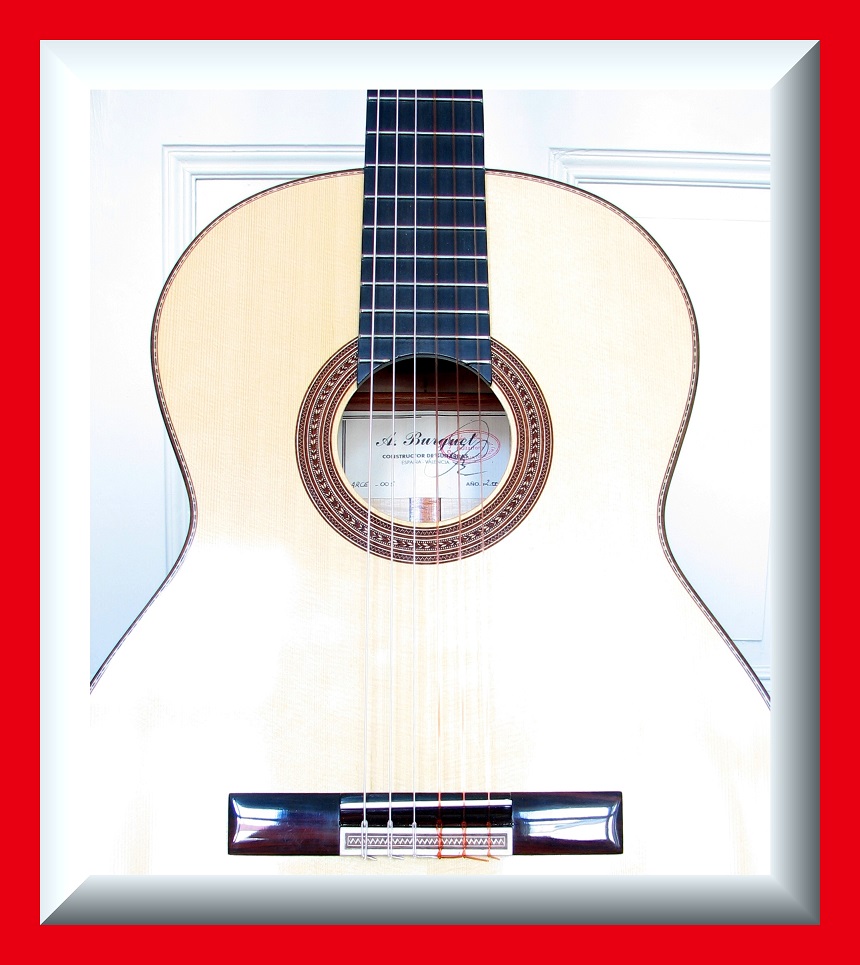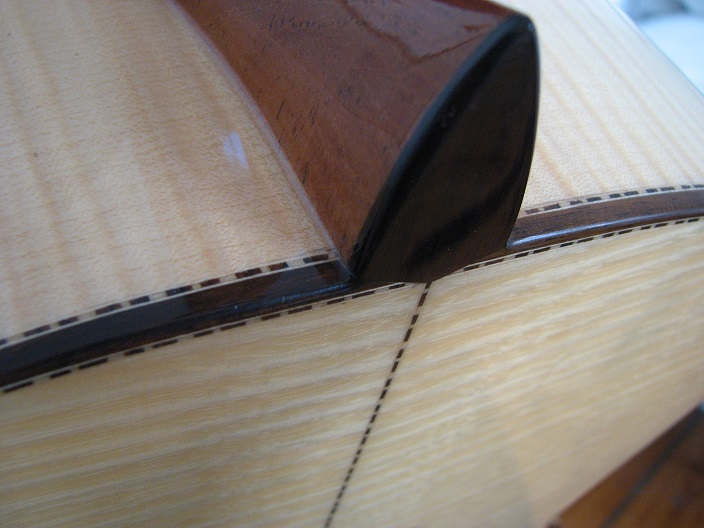|
Ned Milburn -> RE: Maple back and sides? (Apr. 18 2013 4:21:38)
|
Hello All,
I was recommended this forum by a local flamenco guitarist and was interested in this thread since I will begin building 2 flamenco guitars (again for local guitarists) very soon - one with Nootka (or Canadian) cypress (aka: Alaskan yellow cedar) and one with maple sides and back.
Here is what I can add, starting with stating the obvious.
Wood expands and contracts at a higher rate longitudinally (across the grain) than parallel to the grain. Each species has its own expansion and contraction rates, and the variation between the longitudinal and parallel expansion also varies depending upon species. Hence, if a back were to be built flat, it would deform the sides as it gained or lost humidity compared to its condition during construction. This is one of the reasons why backs are domed. The side to side dome on a guitar back allows the dome to increase or decrease as humidity is gained or lost from the wood, avoiding deformation of the sides.
There is a spectacular resource for any wood-worker called "The Wood Database". Since I cannot flip browser tabs while writing this post without losing the draft, I'll only include one link that I was able to copy.
http://www.wood-database.com/lumber-identification/hardwoods/bigleaf-maple/
You can click the upper right "search by common name" and find different woods to compare expansion rates with the readings of the maple. If I remember correctly, the expansion/contraction rates are given near the bottom of the wood's specifications.
Interesting to note is the fact that Honduras mahogany has a very similar expansion rate longitudinally and parallel to the grain. This is why mahogany is widely considered "dimensionally stable". Brazilian rosewood has a very low longitudinal expansion rate. Indian rosewood is medium, while maple (big leaf) has a higher rate of longitudinal expansion. Also of note is Alaskan yellow cedar, which is much more stable than I would have thought for such a soft and light wood. These specs give evidence for various people's claims that maple is "less stable" than other side/back wood choices. Also, this could be the reason that some builders may decide to build a slightly greater dome in maple backed guitars than other wooded guitars. (Although I am also of the opinion as a few other forum members stated that there shouldn't be a problem building a maple backed guitar with a standard dome.)
I believe it is a good idea to understand a species' properties before working with it. Nowadays, with resources such as the Wood Database, we have access to information that centuries ago would have only been gained by direct experience, empiricism, and/or working as an apprentice to a master who already experienced different woods' properties through direct empiricism.
Cheers! I'm looking forward to reading and participating further in this forum.
|
|
|
|


